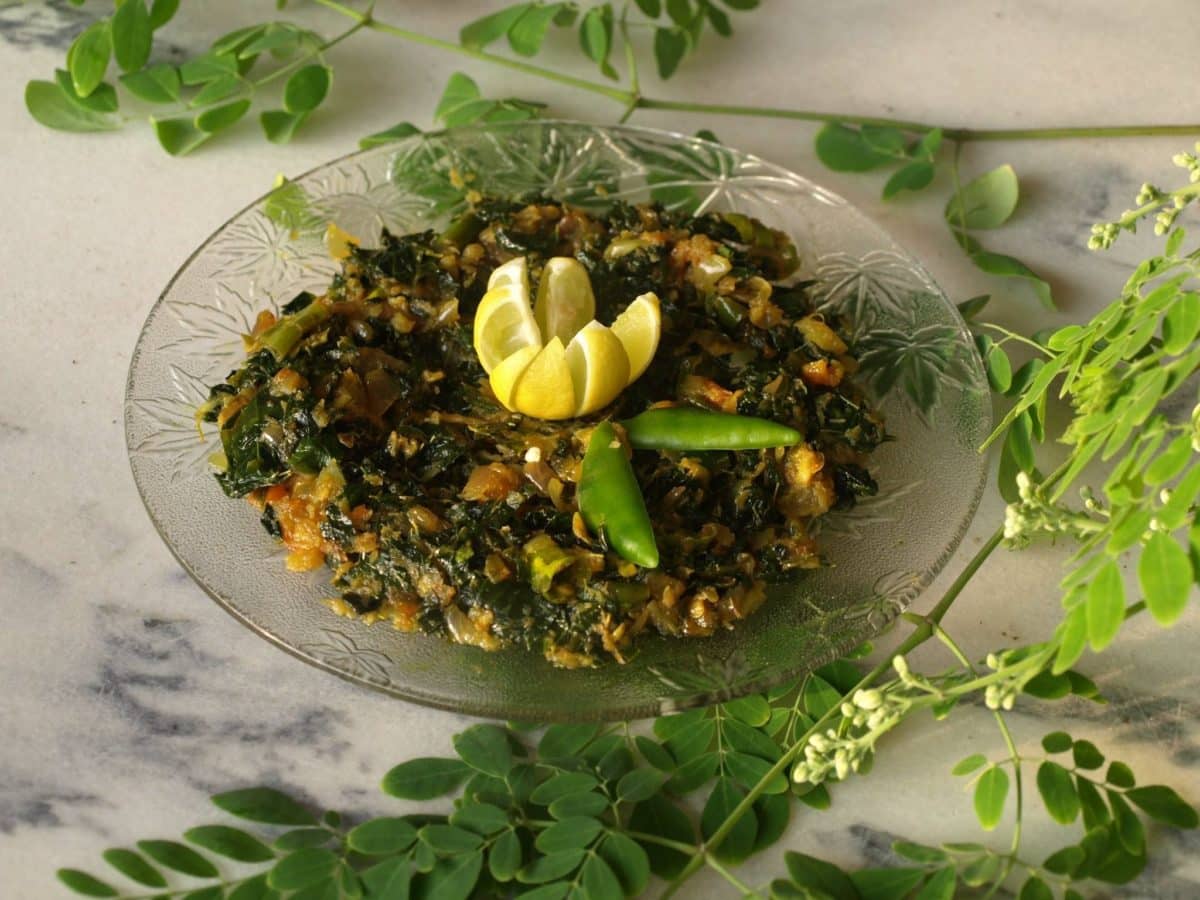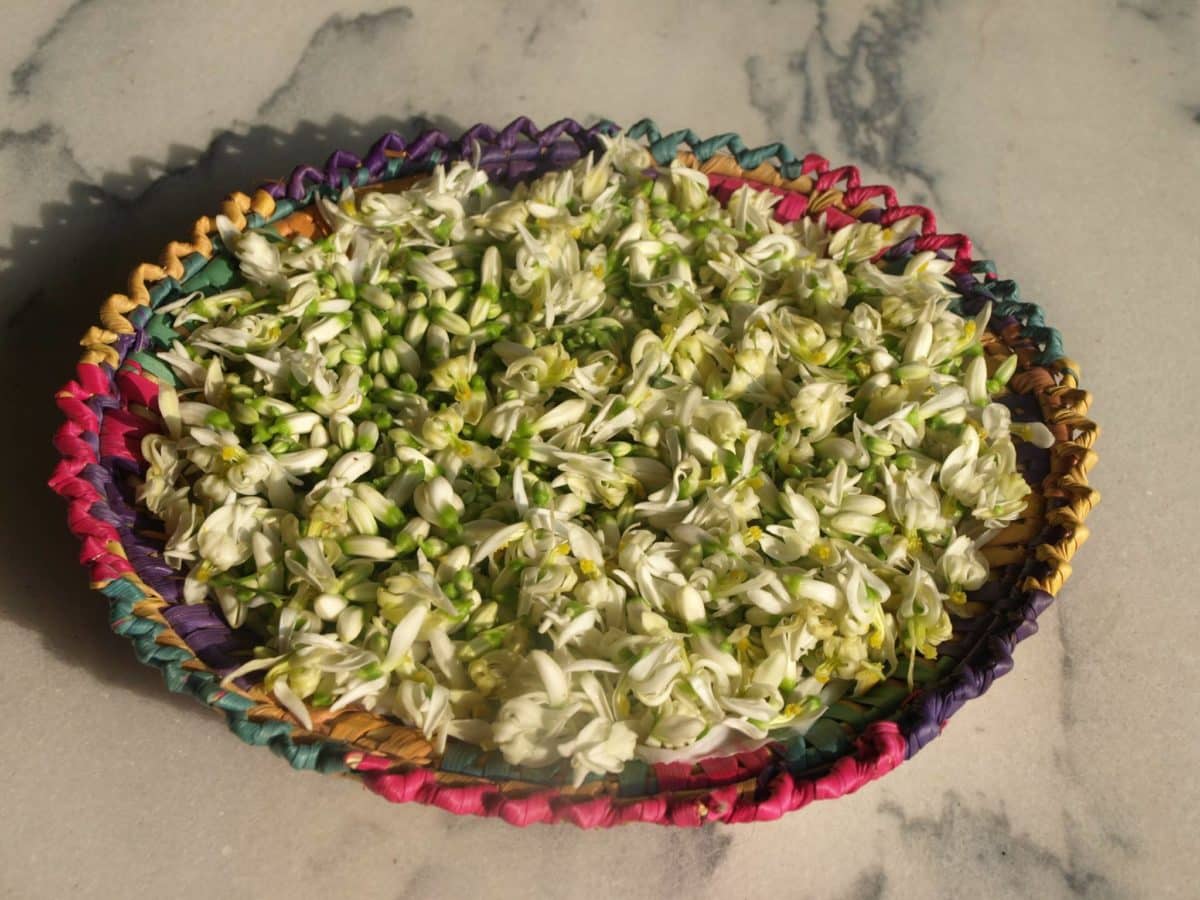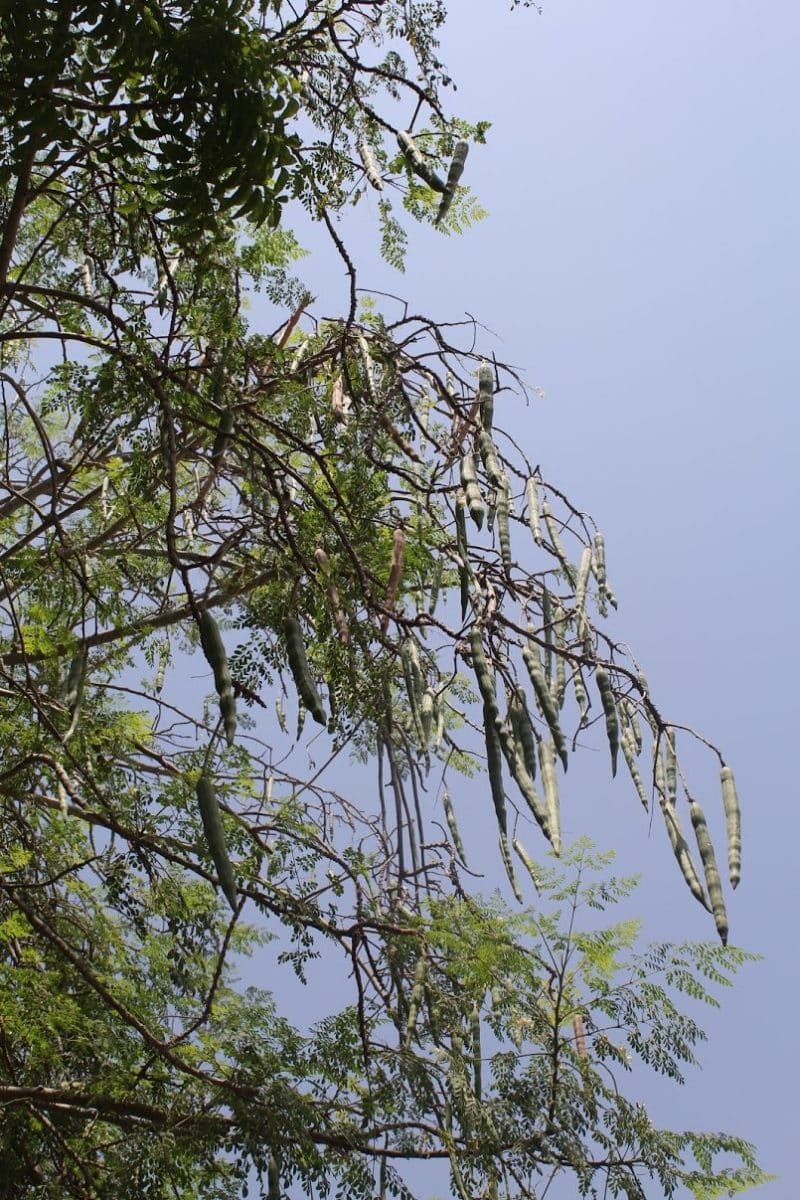Moringa Oleifera is commonly known as the “drumstick tree” because of its drumstick-shaped fruit. Easy to grow in hot and dry climates, the tree needs little water and not much tending to grow rapidly. Although the moringa is drought-resistant and will flower once a year under arid conditions, it will also thrive where there is consistent rainfall and flower more often. The resulting drumstick pods hang off the tree like green icicles. If a pod is not plucked, it will grow thicker and drier, eventually drying up while still on the tree.
Many parts of the moringa tree are edible and have different uses. The green drumsticks are used in South Asian cooking, particularly in curries. For preparation, they need to be peeled, washed, and cut into 10 cm (4-inch) pieces that can be bound in little bundles to prevent them from falling apart in the gravy. The leaves are often added into salads and stir-fries, and are also cooked as a vegetable dish on their own, with added spices or topped with eggs.

Native to India, moringa is eaten in all regions of the country, especially by vegetarians who make up a large percentage of the Indian population. It’s a daily staple in the diet of South Indians, in particular. A Parsi dish, Machi Singh no Patio, is specially prepared in honor of the drumstick (Singh).


Growing up in Karachi, Pakistan, I saw a Moringa Oleifera tree each day that was just outside my bedroom window. Because it grew wild, in a partially shady spot, it was mostly forgotten except for the drumsticks that were served to us now and again. And I did not know that so many nutritious properties were contained in this natural wonder. Full of vitamins, minerals, calcium and fiber, moringa is recommended for help with stomach ailments and to increase lactation for breast-feeding mothers who experience deficiency. Oil, called “Ben oil,” is extracted from the seeds of the drumstick tree and has a wide variety of uses; Ben oil is used for cooking, can be found in commercial skincare products, and is even used in water purification.
Many foods that are staples in one part of the world are unfamiliar in another—ready to be discovered, experimented with, and perhaps adopted. Through trade, migration, and changing eating habits, moringa came to be cultivated in Africa, Latin America, Australia, and even in Southern California, making its way around the globe. ![]()
